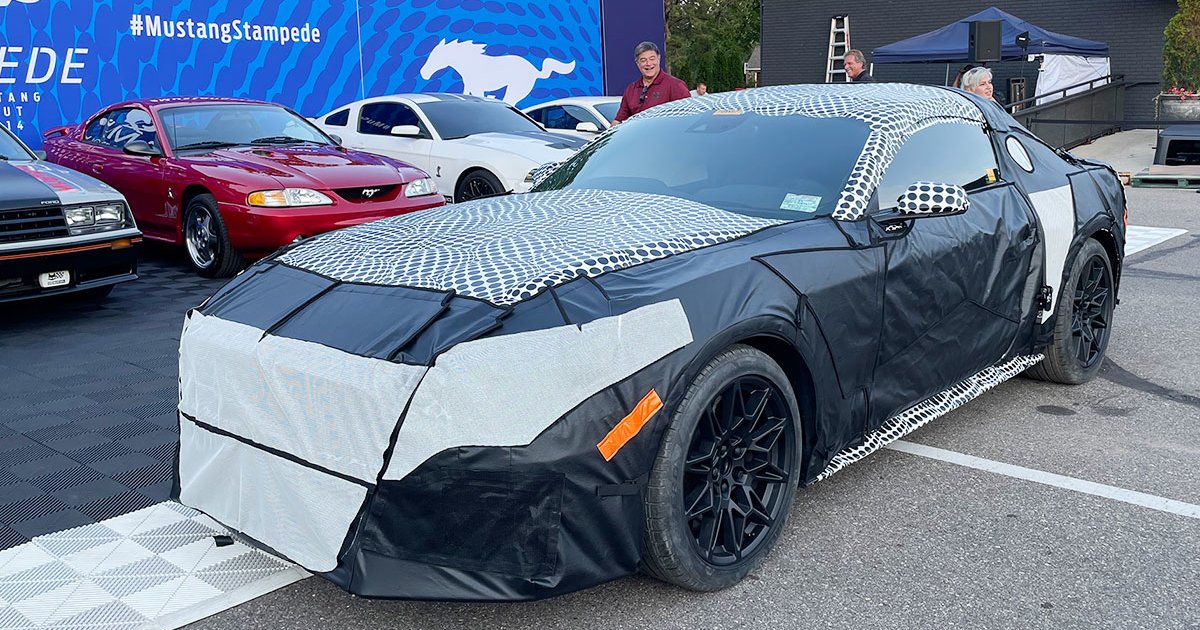
DETROIT — The six generations of Mustangs introduced over the past six decades have often reflected Ford Motor Co.’s priorities and ambitions at the time.
The first pony car, for example, was aimed at attracting the coming wave of postwar baby boomers who wanted something more hip and exciting than their parents’ sedans. The Mustang II was a smaller, fortuitously timed answer to the oil crisis of the 1970s. The current generation was the first to go global as Ford strove to be more competitive and profitable in overseas markets such as Europe and China.
The seventh-generation Mustang, debuting within weeks, is a product of a company that’s reinventing itself. Ford is slashing jobs and reorganizing its work force to prioritize electric vehicles, which account for less than 3 percent of its U.S. sales so far this year.
That mix is beginning to shift quickly, though, and Ford is rushing to get ahead of the curve. Since April 1, it has reported selling 286 more of its Mustang Mach-E electric crossover in the U.S. than gasoline Mustangs.
The company recently stopped selling the EcoSport in North America, and the Transit Connect, Escape and Edge are expected to vanish in the coming years. Ford is now largely focused on the F-Series, Mustang and Bronco — vehicle families using platforms with relatively long life cycles that can be occasionally upgraded with derivatives and special editions, reducing the urgency of ground-up redesigns.
Enter the 2024 Mustang. The car has a new platform, called S650, but it’s not expected to depart drastically from the current S550 model. A hybrid variant that was planned for mid-decade has been scrapped, according to three people familiar with the plans, and the car isn’t expected to get a long-rumored all-wheel-drive configuration, instead continuing as a rear-wheel-drive sports coupe.
Ford has told suppliers it’s stretching the product’s lifecycle from six to eight years, all but ensuring this will be the final gasoline-powered Mustang before an expected switch to battery power around 2030.
“The Mustang can largely follow the Dodge Challenger’s path of the last 15 years: interesting, fun, creative, nostalgic versions,” Karl Brauer, executive analyst at ISeeCars, said in an interview. “If there’s a stream of those coming, that’s as much, if not more effective for sales of that vehicle than any new, innovative technology. The Mustang buyer base will definitely reward a more traditional approach and less ‘evolution’ than the average new vehicle.”
The Mustang will likely be the last internal-combustion pony car standing. Dodge will stop producing gasoline-powered Chargers and Challengers next year, and General Motors is expected to follow suit in 2025 when it discontinues the slow-selling Camaro.
To celebrate what could be the last of its kind, Ford is asking Mustang owners to form a parade it’s calling “The Stampede,” snaking from its Dearborn headquarters to downtown Detroit for the reveal of the seventh-generation car Sept. 14 as the city’s auto show gets underway.
The Mustang redesign comes as Ford is reorganizing itself.
The automaker this week said it was eliminating 3,000 salaried positions across the U.S., Canada and India. It cut 2,000 salaried jobs and 1,000 contract positions, according to a letter to employees from CEO Jim Farley and Executive Chair Bill Ford.
“Building this future requires changing and reshaping virtually all aspects of the way we have operated for more than a century,” Farley and Ford wrote. “It requires focus, clarity and speed. And, as we have discussed in recent months, it means redeploying resources and addressing our cost structure, which is uncompetitive versus traditional and new competitors.”
The company told employees that, in addition to eliminating jobs, it is revamping and simplifying functions within its organization.
The cuts affected a variety of roles, including purchasing, and are expected to come in both the Ford Blue (gasoline vehicles) and Model e (EVs) divisions, as well as at Ford Motor Credit.
Bloomberg in July reported that Ford planned to cut up to 8,000 jobs in the near future, and Farley last month reiterated his stance that Ford had too many people.
“We have skills that don’t work anymore, and we have jobs that need to change,” he said on Ford’s second-quarter earnings call. “In the past, often indiscriminately, we’d take the cost out. That’s not what’s happening at Ford now. This is a different kind of change, where we’re reshaping the company.”
Among those let go: a product development leader in charge of body interior engineering on the next-generation Mustang program who had spent about 20 years with the automaker, according to his LinkedIn profile. He declined to comment.